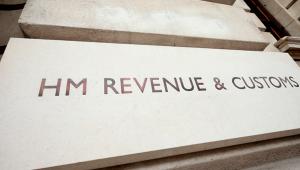Under the current ‘tax deferred’ arrangement, all pension savings are free of tax on income and investment gains, with tax only paid on income or drawdown received after 55, levied at a person’s marginal income tax rate – the so-called ‘EET’ arrangement.
On the one hand, some want the status qou to persist, brushing aside concerns that most of the cost of tax-relief to the government is spent on high-earners.
Others lobby for flipping the tax-regime on private pension saving to that of ISAs (‘TEE’), even if this means the lowest-earners who never paid tax on their pension income would find themselves paying tax upfront. For the chancellor, such a regime would promise a huge tax windfall, albeit at the direct expense of his successors decades from now.
Most stakeholders seem to have settled on a middle ground. Recognising the regressive nature of public spending on tax-relief (most goes to the highest-paid) and the political realities of continued austerity, consensus has formed around a single flat rate of tax-relief at a level higher than the basic rate of income tax relief that most workers pay. The chancellor could pitch such a change as a boost to the pension savings of ‘workers’, and the extra tax-relief for basic rate payers could be repackaged as some sort of ‘Savers Bonus’.
However, a remarkable feature of this debate has been the absence of discussion on why pension tax relief exists at all, the implications of the government’s new Freedom and Choice regime, and where the debate will go in future.
Let’s take a step back. Pension tax-relief reportedly dates back to the Finance Act of 1921, which introduced the mandatory annuitisation of pension savings.
Indeed, the current ‘EET’ tax regime for private pension saving was one half of the so-called ‘annuities deal’. This required that pension savings be used to provide a guaranteed pension income during retirement in return for an exceptionally generous incentivised tax-regime compared to other savings vehicles. The Treasury restated the annuities deal as recently as 2006.
Of course, the obligation to obtain a secure pension income using pension savings was scrapped by the chancellor in his Freedom and Choice changes to rules on defined contribution pensions, with workers now able to access their pension pots from the age of 55. This has left the other side of the annuities deal hanging in the air – and looking increasingly anachronistic.
For while the indications are that a single flat rate of tax relief is the Treasury’s preferred option, the longer-term prognosis for pension tax relief is bleak.
Consider the following: Mike is a low-paid builder working fixed-term contracts for several different employers. Mike is a responsible guy, and he wants to put away some savings for retirement, but is afraid to lock his money away until he’s aged 55 because of his low salary and the insecure job environment he faces. So, he puts all his retirement savings into ISAs instead.
John is a well-paid lawyer on a permanent contract. He is happy to lock away his retirement savings in a workplace scheme until he is 55, as he is confident of his contract and long-term employment prospects.
Why should Mike not benefit from the same generous tax-regime on his retirement savings as John?
Put another way: now that pension saving has become simply retirement saving – following the Freedom and Choice changes – how can we justify one form of retirement saving not getting the same tax-relief incentives as another?
The truth is that Freedom and Choice effectively marked the end of pension saving; instead, there is only retirement saving. And why should savings earmarked for retirement that can’t be accessed until ten years before state pension age benefit from much more generous tax-relief than any other form of long-term, retirement saving?
Ultimately, it is impossible to mount a defence of pension tax relief without mounting a defence of the principle of secure pension incomes that underpinned the annuities deal.
This suggests that if the chancellor does opt for a flat-rate Savers Bonus, pension tax relief will have a temporary stay of execution that may last no more than around five-ten years, before debate moves on to focus on the inconsistencies and inequalities of ‘pension tax-relief’. For those who want pension tax-relief to survive, the question is how this period is used.
A growing proportion of the pensions sector is now swinging behind the principle of ‘default’ paths of least resistance for savers at retirement, which would provide them with a regular, secure income until the end of their life.
If this agenda makes progress, and in future most retirement savings continue to be used to provide a guaranteed pension-style income in old age, ‘pension tax-relief’ might just survive. However, if the UK’s lurch to a ‘voluntary annuitisation system’ results in the outcomes found in Australia, where most pension pots are spent on property and motor vehicles, future chancellors will likely return to unwind what remains of pension tax-relief after this year’s Budget.
Campaigners nervously eyeing the Budget announcement must understand that pension tax-relief will not survive without pension incomes.




















